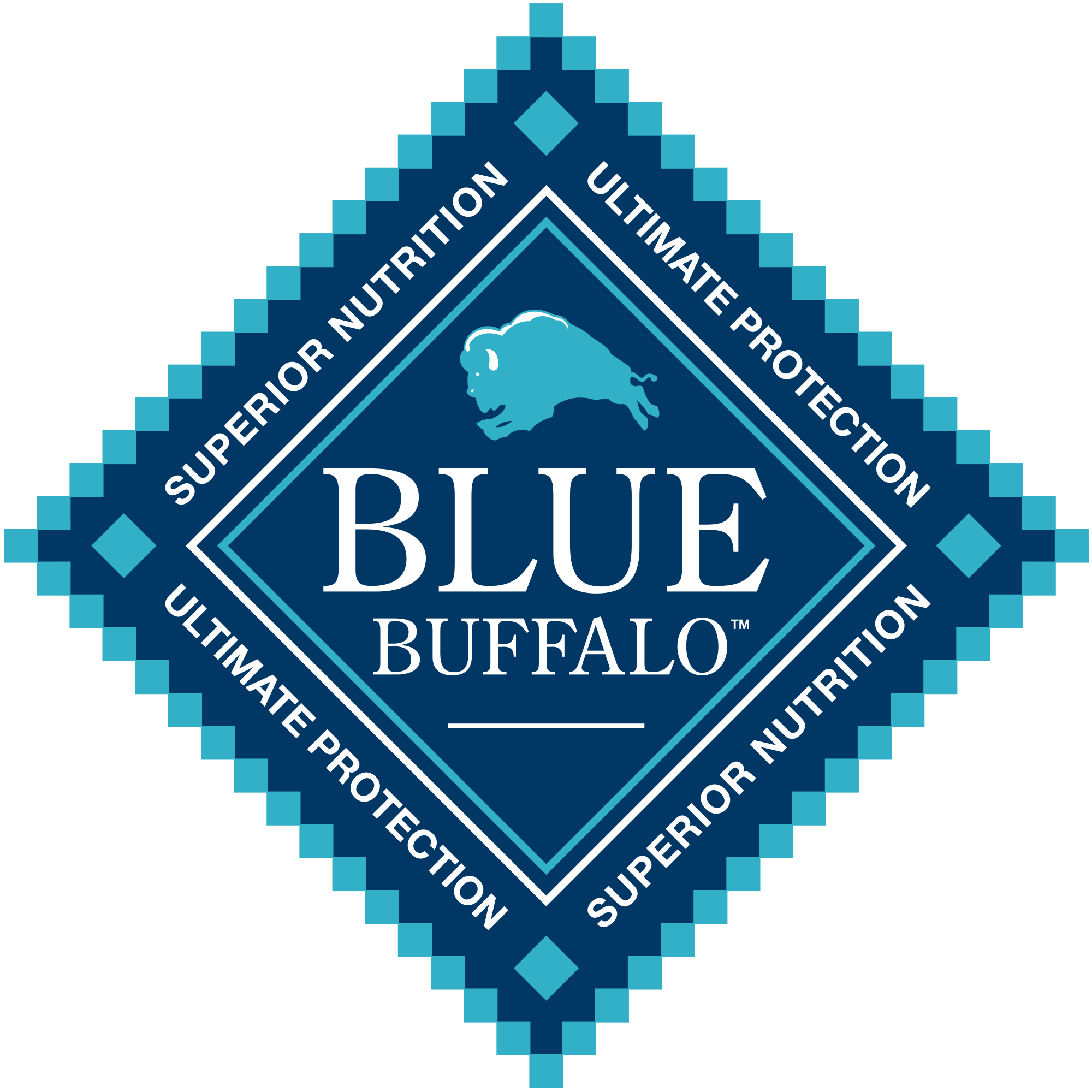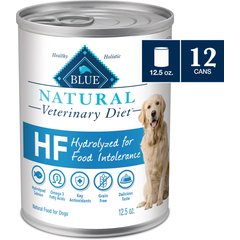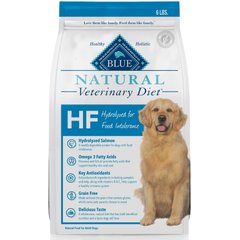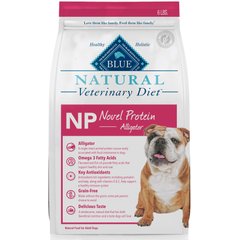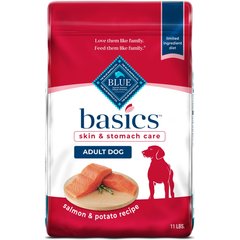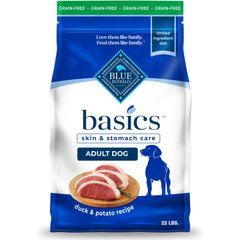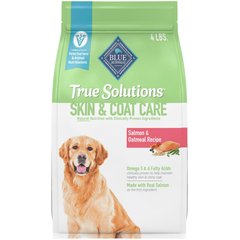Food Allergies and Intolerances in Dogs
SPONSORED BY
Adverse food reaction (AFR) in dogs is the term used to describe an abnormal response to a “normal” food.
There are two main AFRs in dogs: food allergy, where the immune system is involved, and food intolerance, which occurs without immune system involvement.
While the underlying causes differ, dog food allergies and food intolerances often have similar clinical signs and are diagnosed similarly. Both are typically treated the same, too—with a change in diet, such as switching to a hydrolyzed protein diet.
What Are Food Allergies in Dogs?
Food allergies are an immune response to ingredients in a dog's diet—an ingredient they are allergic to. This immune response usually becomes apparent over a prolonged amount of time rather than immediately after they try a food for the first time.
The most common dog food allergens are proteins. Examples include chicken, beef, and dairy proteins.
When a dog with food allergies encounters a specific food they are allergic to, their immune system sees that protein as a foreign substance and mounts an immune system attack.
This commonly causes skin signs, like itching, redness, and swelling, and occasionally causes gastrointestinal signs, like vomiting, diarrhea, and gas.
Dog food allergies are less common than environmental allergies, such as seasonal allergies and flea/tick allergies. In fact, only 0.2% of dogs are actually affected by food allergies.
What Is Food Intolerance in Dogs?
Food intolerance does not involve the immune system and can occur at any time, on the first exposure or over time.
In these cases, the offending ingredient may be a protein or other ingredient that is causing problems. An example in people is lactose intolerance.
Another difference between food allergies and food intolerance is that animals with food intolerance may do fine with small amounts of the food in question, whereas a true food allergy can be triggered by trace amounts.
Symptoms of Food Intolerance and Food Allergies in Dogs
Dog food allergy symptoms and symptoms of food intolerance in dogs are very similar and can include:
Skin (both food allergy and intolerance):
- Itchy and/or red skin
- Frequent ear infections/skin infections
- Hair loss
- Licking/chewing feet (vets often look at the underside of the paws for brown staining)
GI (both food allergy and intolerance):
- Diarrhea
- Vomiting
- Excessive gas (flatulence)
- Weight loss
- Decrease energy (lethargy)
Anaphylaxis (rare, food allergy only):
- Hives and facial swelling
Causes of Food Allergies and Food Intolerance in Dogs
There may be a genetic component to food allergy and intolerance in dogs. However, the exact mechanism of why allergies/intolerance develop in some dogs and not in others is not fully understood.
Dogs can have allergies and intolerances from an early age, or they can develop them several years into life.
While allergies/intolerances can occur in any breed of dog at any age, some breeds may be at an increased risk: Labrador Retrievers, West Highland White Terriers, and Cocker Spaniels.
There are several ingredients that are often linked to food allergies/intolerances in dogs. Proteins are the most common offending ingredient. Common dog food allergies/intolerances include:
- Chicken
- Beef
- Dairy
- Wheat
- Soy
- Eggs
How Veterinarians Diagnose Food Allergies and Food Intolerance in Dogs
There is no such thing as a dog allergy test for food per se. Available blood tests are considered unreliable. Instead, dogs are most often diagnosed with food allergies and food intolerance based on a physical exam, clinical signs, and their response to a food trial.
Your dog’s veterinarian may recommend that you complete a food trial with your pet. Food trials last eight to 12 weeks and must be followed exactly as prescribed. Be sure not to give any treats, other diets, or other foods that may disrupt the results of the trial.
Talk to your veterinarian about which heartworm and flea/tick prevention products are best during this time, as many have added beef or chicken protein for flavor.
There are various ways that a food trial can be approached:
- A prescription hydrolyzed protein diet. These diets have broken their proteins down to small particles so that they are unable to bind to the receptor and initiate the immune response.
-
Novel “new,” protein/carbohydrate source diets. This is food that has unusual protein or carbohydrate sources and limited ingredients so there are fewer that may cause an allergic reaction.
-
Skin support diets. These are fortified with bioactives and phytonutrients to minimize the immune system's response.
Food trials are the best way to diagnose food allergies and intolerances. There are diagnostic tests on the market, but many questions remain regarding their accuracy.
Treatment of Food Allergies and Food Intolerance in Dogs
Most dog food allergies and intolerance can be well treated with the right change in diet.
Best Food Diet for Dogs With Food Allergies
Many diets on the market can help to manage your dog’s allergies.
Allergies are specific to the individual dog, so there is no one “best diet.” The best diet is the food that contains ingredients that your dog is not allergic to and is balanced and formulated for optimal health.
Often diets for food allergies will be therapeutic diets, meaning they require veterinary authorization. This is critical to make sure certain ingredients remain novel.
These diets typically have stringent protocols to ensure there is no cross contamination, as even trace amounts of the offending allergen can trigger symptoms.
Blue Buffalo™ is one brand that offers such therapeutic diets, available with an authorization from your vet, including:
- Blue Natural Veterinary Diet™ HF Dog Food: This diet is formulated with high quality, hydrolyzed salmon, meaning the protein has been broken down into such small pieces that it’s virtually “invisible” to the dog’s immune system.
-
Blue Natural Veterinary Diet NP Dog Food: This diet is formulated with a novel protein: alligator, which is a good alternative for dogs who have allergies to poultry, red meat, and other animal proteins.
Best Food Diet for Dogs With Food Intolerance
Since food intolerances do not have an immune system component, they can often be managed with a non-prescription, limited-ingredient diet.
These foods typically contain one protein and one carbohydrate source and are good options to help manage food intolerances, as long as you can find the right fit for the right dog.
-
Blue Basics™ Skin and Stomach Care Salmon and Potato Dog Food: This is a limited-ingredient, single-protein food formulated for dogs with food sensitivities/intolerances. Deboned salmon is the first ingredient, and it contains no chicken (or poultry) meat or by-product; no corn, wheat, or soy; and no artificial flavors or preservatives.
-
Blue Basics Skin and Stomach Care Duck and Potato Dog Food: Another single-protein, limited-ingredient diet of the Blue Basics line. While grains are often an important part of a pet’s diet, this food provides a grain-free, gluten-free option for those pets whose vet says they need to avoid this ingredient.
-
Blue True Solutions™ Perfect Skin and Coat: This is a single-protein, limited-ingredient diet in the True Solutions line. It is clinically proven to support healthy skin and shiny coat and features real salmon as the first ingredient and only animal protein.
Allergy Medications
It is very common for dogs with food allergies to also have environmental allergies. They may be prescribed allergy medications like Apoquel®, Cytopoint®, antihistamines, or steroids, in addition to a special diet.
Several supplements may be beneficial to dogs with allergies as well. These supplements typically include omega fatty acids to boost the natural barrier function of the skin, such as:
Recovery and Management of Food Intolerance and Food Allergies in Dogs
Dog food allergies/intolerances cannot be cured, but they can be well-managed long term with appropriate diet therapy and avoidance of offending ingredients.
If your dog has a food allergy or intolerance, be sure to follow your vet’s specific instructions on diets and treats they can eat.
If your dog has food allergies/intolerances and is undergoing a diet trial, expect it to last eight to 12 weeks before you can see an improvement.
Reduction in licking and chewing may be seen in the first four weeks, but other dogs may take up to 12 weeks before you see any improvement.
Dog Food Allergies and Food Intolerance FAQs
What is the most common food allergy in dogs?
The most common food allergy in dogs is the protein source, such as beef or chicken.
What are the most common signs of food allergies in a dog?
The most common signs of food allergies in dogs are itching, frequent skin and ear infections, and chewing/licking of the feet. It’s important to remember that other conditions can lead to similar symptoms.
Can you test a dog for food allergies?
Dogs are tested for food allergies by using diet trials, generally under the guidance of a veterinarian. There are blood and skin tests for environmental allergies, but they are unreliable for food allergies.
Can you cure a food allergy in a dog?
Food allergies cannot be cured. However, they can be well-managed with an appropriate diet and avoidance of allergic ingredients.
How long does it take dog allergies to clear up?
Dog food allergies and intolerances are not something that can be cured but can be effectively managed once the offending food item is identified.
Often a food trial is used to determine the allergen, which can take up to 12 weeks. If food allergies have led to skin and ear infections, then these must be treated separately.
What is the difference between dog food allergy and food intolerance?
Dog food allergies involve triggering an immune response whereas food intolerance does not.
What causes food intolerance?
Food intolerance in dogs is a type of adverse food reaction (AFR). AFRs are an abnormal response to a normal food and include food allergies, which involve an immune system response, and food intolerances, which occur without the immune system.
Both food allergy signs and dog food intolerance signs are similar, and can result in vomiting, diarrhea, and itchy skin.
This sponsored article was paid for by Blue Buffalo. All opinions within belong to Blue Buffalo.
References
Burns, K. Few pets allergic to food; flea, environmental allergies rise. June 2018. Banfield Pet Hospital; American Veterinary Medical Association.
Mueller, R. S., Olivry, T., & Prélaud, P. Critically appraised topic on adverse food reactions of companion animals (2): common food allergen sources in dogs and cats. BMC Veterinary Research, January 2016.
Rees, C. Food allergies in the dog and cat (Proceedings). DVM 360. October 2008.
Verlinden, A., Hesta, A., Millet, S., & Janssens, G. P. J. (2006). Food allergy in dogs and cats: A review. Critical Reviews in Food Science and Nutrition. January 2007.
